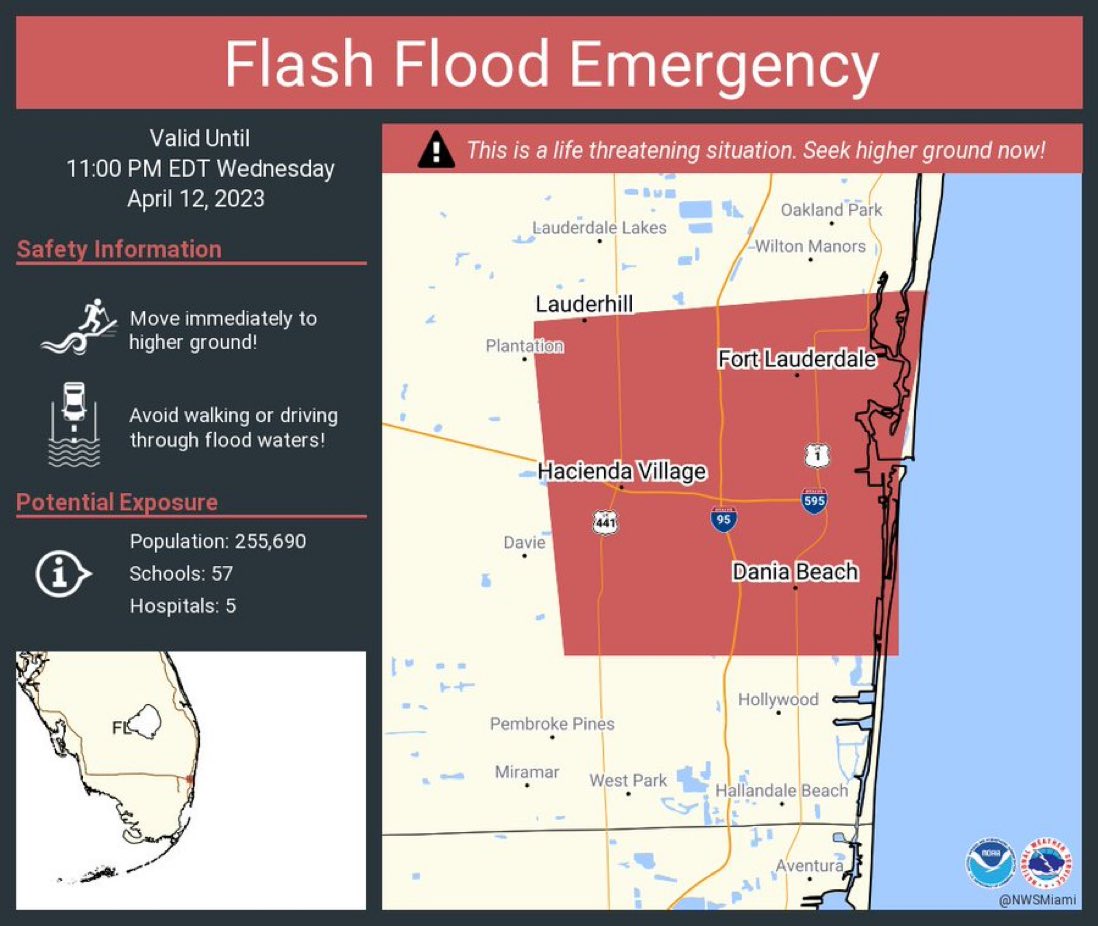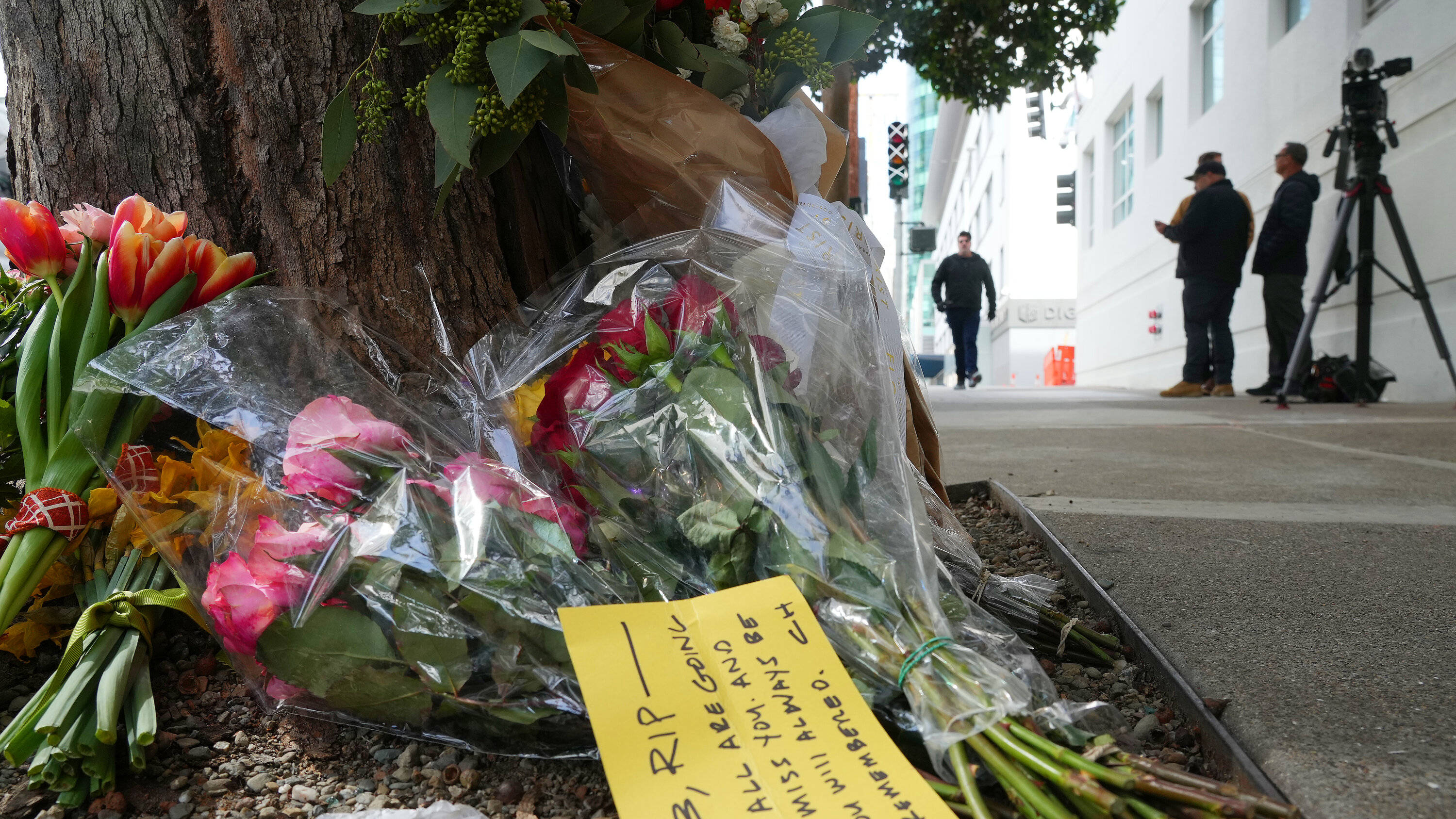Flash Flood Emergency: What To Do Before, During, And After

Table of Contents
Before a Flash Flood Emergency: Preparation is Key
Proactive preparation is your best defense against the dangers of a flash flood emergency. Taking steps beforehand significantly reduces risk and improves your chances of survival and minimizing property damage. Here's what you need to do:
Develop a Family Communication Plan
A robust communication plan is vital during emergencies. Knowing how to contact each other and having a designated meeting point can be lifesaving.
- Establish a meeting place: Choose a location outside of flood-prone areas, easily accessible to all family members.
- Designate an out-of-state contact: Select a person outside the affected area as a central point of contact for family members to check in with. This ensures communication even if local networks are down.
- Sign up for emergency alerts: Register your phone number and email address with your local emergency management agency to receive timely warnings and instructions about flash flood events. Utilize weather apps and other notification systems.
Create a Go-Bag
A well-stocked go-bag, also known as an emergency kit, is essential for any flash flood emergency. It should contain everything you and your family need for at least 72 hours.
- Essentials: Include plenty of water (one gallon per person per day), non-perishable food items, a first-aid kit, necessary medications, flashlights with extra batteries, a portable radio, and copies of important documents (identification, insurance policies, medical records).
- Important documents: Keep copies of these documents in a waterproof bag within your go-bag. Consider storing digital copies in the cloud as well.
- Accessibility: Store your go-bag in an easily accessible location, ideally on an upper floor or in a readily movable container.
Identify Safe Zones and Evacuation Routes
Knowing your surroundings and potential escape routes is critical during a flash flood. Familiarize yourself with your community's flood risk and evacuation plans.
- High-risk areas: Identify areas in your community prone to flash flooding, such as low-lying areas, near rivers or streams, and areas with poor drainage.
- Evacuation routes: Learn the designated evacuation routes and the locations of nearby shelters. Plan multiple routes in case your primary route becomes impassable.
- Mapping: Use online resources or local maps to visually identify safe zones and evacuation paths.
Protect Your Property
Taking steps to protect your property can minimize potential damage during a flash flood.
- Clear drains and gutters: Regularly clean gutters and drains to ensure efficient water flow and prevent water buildup around your home.
- Elevate valuables: Move valuable items, appliances, and furniture to higher ground. Consider using waterproof containers for sensitive items.
- Flood insurance: Explore purchasing flood insurance, even if you're not in a high-risk area. Flash floods can occur unexpectedly.
During a Flash Flood Emergency: Taking Immediate Action
When a flash flood warning is issued, immediate action is crucial. Your safety is the top priority.
Stay Informed
Staying updated on the situation is vital. Monitor weather forecasts and emergency alerts consistently.
- Weather reports: Keep a close eye on local news broadcasts, weather apps, and emergency alert systems for updates on the flash flood's intensity and movement.
- Official warnings: Follow instructions and guidelines issued by local authorities and emergency services.
- Avoid danger zones: Stay away from areas prone to flooding, including low-lying areas, rivers, streams, and ditches.
Evacuate Immediately
If instructed to evacuate, do so immediately without delay. Your life is more valuable than any possessions.
- No delay: Don't wait for the floodwaters to rise; evacuate as soon as you receive an evacuation order.
- Designated routes: Follow designated evacuation routes provided by authorities and avoid flooded areas.
- Never drive through floodwaters: Even a few inches of water can sweep a vehicle away.
Seek Higher Ground
If evacuation isn't possible, move to higher ground within your home or building.
- Higher floors: If possible, move to the highest level of your building.
- Avoid windows and doors: Stay away from windows and doors to avoid potential damage from floodwaters.
- Turn off utilities (if safe): Turn off gas, electricity, and water if it’s safe to do so and you can do so without risking your safety.
If Trapped in a Vehicle
If your vehicle becomes trapped in floodwaters, your priority is to escape immediately.
- Abandon the vehicle: Get out of your vehicle immediately and move to higher ground.
- Rapid escape: Floodwaters can rise rapidly; don't waste time trying to rescue your car.
After a Flash Flood Emergency: Recovery and Rebuilding
The aftermath of a flash flood requires careful action to ensure safety and begin the recovery process.
Check for Injuries
After the immediate danger has passed, assess for injuries and seek medical attention if needed.
- First aid: Provide first aid to any injured individuals.
- Contaminated water: Be aware of the dangers of contaminated water and potential hazards like downed power lines.
Avoid Contaminated Water
Floodwater is often contaminated with sewage and other harmful substances.
- Avoid contact: Avoid contact with floodwater at all costs.
- Thorough washing: If contact occurs, wash thoroughly with soap and clean water.
Report Damages
Report any damage to your property, infrastructure, or utilities to the appropriate authorities and your insurance company.
- Insurance claim: Contact your insurance company immediately to report damages and begin the claims process.
- Authorities: Report any damage to public infrastructure or utilities to the relevant authorities.
Seek Assistance
If you need assistance, contact the Red Cross or other relief organizations for support.
- Relief organizations: Numerous organizations provide aid to those affected by flash floods.
- Local resources: Check for local support groups and resources that can provide assistance during the recovery process.
Conclusion
Being prepared for a flash flood emergency is crucial for safeguarding lives and minimizing damage. By following these steps before, during, and after a flash flood, you can significantly improve your chances of survival and expedite the recovery process. Remember, understanding your risk and having a well-defined plan is the first step in mitigating the impact of a flash flood emergency. Stay informed, stay safe, and always prioritize your safety and the safety of your loved ones during a flash flood emergency. Develop your personal plan to deal with future flash flood emergencies today.

Featured Posts
-
 Plenum I Garazh Vliyanie Politiki Na Sovetskuyu Satiru I Istoriya Mesti Myagkovu
May 25, 2025
Plenum I Garazh Vliyanie Politiki Na Sovetskuyu Satiru I Istoriya Mesti Myagkovu
May 25, 2025 -
 Darwin Shop Owner Stabbed To Death Teenager In Custody
May 25, 2025
Darwin Shop Owner Stabbed To Death Teenager In Custody
May 25, 2025 -
 Annie Kilners Social Media Posts Spark Controversy After Kyle Walker Incident
May 25, 2025
Annie Kilners Social Media Posts Spark Controversy After Kyle Walker Incident
May 25, 2025 -
 Canada Mexico Trade Navigating The Challenges Of Us Tariffs
May 25, 2025
Canada Mexico Trade Navigating The Challenges Of Us Tariffs
May 25, 2025 -
 Fyrsta 100 Rafmagnsutgafan Af Porsche Macan Oell Upplysingar
May 25, 2025
Fyrsta 100 Rafmagnsutgafan Af Porsche Macan Oell Upplysingar
May 25, 2025
Latest Posts
-
 Swiatek Wins In Madrid De Minaurs Tournament Ends In Straight Sets
May 25, 2025
Swiatek Wins In Madrid De Minaurs Tournament Ends In Straight Sets
May 25, 2025 -
 Madrid Open Update De Minaurs Early Exit And Swiateks Dominant Win
May 25, 2025
Madrid Open Update De Minaurs Early Exit And Swiateks Dominant Win
May 25, 2025 -
 De Minaur Out Of Madrid Open After Straight Sets Loss Swiatek Triumphs Over Keys
May 25, 2025
De Minaur Out Of Madrid Open After Straight Sets Loss Swiatek Triumphs Over Keys
May 25, 2025 -
 Alex De Minaurs Madrid Open Exit Straight Sets Defeat And Swiateks Victory
May 25, 2025
Alex De Minaurs Madrid Open Exit Straight Sets Defeat And Swiateks Victory
May 25, 2025 -
 Grand Slam Debut Alex Eala Set For Paris
May 25, 2025
Grand Slam Debut Alex Eala Set For Paris
May 25, 2025
